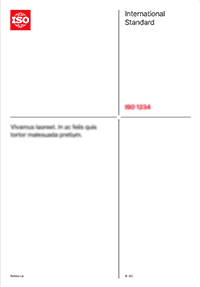Abstract
This document specifies a method for comparing simulation results from a vehicle model to measured test data for an existing vehicle according to closing-curve tests as specified in ISO 11026. The purpose of the validation is to demonstrate that the vehicle dynamics simulation, combined with an integrated electronic stability control (ESC) system, can predict the roll and yaw stability behaviour of a physical vehicle, including the ESC system interventions, during a closing-curve test. The simulation method can be either hardware-in-the-loop [with the original electronic control unit (ECU) on a HiL test stand] or software-in-the-loop, based on a software code generated from the same source as for the ECU in the real vehicle. This document applies to heavy vehicles, including commercial vehicles, commercial vehicle combinations, buses and articulated buses as defined in ISO 3833 (trucks and trailers with a maximum weight above 3,5 tonnes and buses and articulated buses with a maximum weight above 5 tonnes, according to ECE and EC vehicle classification, categories M3, N2, N3, O3 and O4).
General information
-
Status: PublishedPublication date: 2021-05Stage: International Standard published [60.60]
-
Edition: 1Number of pages: 13
-
Technical Committee :ISO/TC 22/SC 33ICS :43.080.01
- RSS updates


